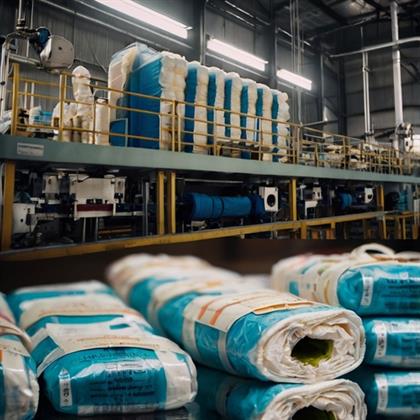
Key Trends in the Aquafeed Market 2031 – Feeding a Growing World Sustainably
October 10, 2024
The Aquafeed Market is projected to witness robust growth by 2031 as the global aquaculture industry continues to expand. With aquaculture set to become a critical component of the world’s food supply, the need for high-quality, sustainable feed products is more important than ever. As the sector evolves, several key trends are shaping the market, influencing both production practices and feed formulations.

The Role of Aquafeed in Aquaculture Expansion
Aquaculture has emerged as the fastest-growing sector of food production globally. To meet the increasing demand for seafood, aquaculture operations require a reliable and efficient supply of feed. The growth of the Aquafeed Market is directly tied to the expansion of fish farming, with feed playing a crucial role in improving fish health, boosting productivity, and enhancing the sustainability of farming practices.
Aquafeed is designed to provide a balanced diet for various species of fish and shellfish, ensuring they receive essential nutrients for optimal growth. The industry has seen significant advancements in feed formulations, with tailored diets now available for specific species and growth stages, allowing producers to maximize yield and minimize waste.
Innovation in Feed Ingredients
One of the most significant drivers of change in the Aquafeed Market is the exploration of alternative feed ingredients. Traditionally, fishmeal and fish oil have been key components of aquafeed, but concerns over the environmental impact of overfishing have led to the search for more sustainable alternatives.
Plant-based proteins, insect meal, and algae are gaining traction as viable alternatives to traditional fishmeal. These new ingredients not only reduce reliance on wild-caught fish but also offer the potential for lower production costs and reduced environmental impact. For example, algae-based feeds are rich in omega-3 fatty acids, which are essential for fish health and often sourced from fish oil. This shift toward alternative proteins is expected to be a game-changer for the future of aquafeed production.
Sustainability Initiatives in the Aquafeed Market
Sustainability is becoming a core focus in the Aquafeed Market. As environmental concerns around aquaculture intensify, there is increasing pressure on feed producers to develop more eco-friendly products. Reducing the carbon footprint of feed production, sourcing sustainable ingredients, and minimizing waste are key goals for the industry.
New technologies are being developed to improve feed efficiency and minimize the environmental impact of aquaculture operations. Precision feeding systems, for instance, allow farmers to optimize feed usage, reducing waste and improving fish growth rates. These innovations not only make aquaculture more sustainable but also more profitable for producers.
Market Dynamics and Regional Outlook
The Asia-Pacific region is expected to lead the Aquafeed Market by 2031, driven by its large and growing aquaculture industry. Countries like China, Vietnam, and India are major players in global seafood production, and the demand for high-quality feed is rising alongside this growth. Additionally, government initiatives promoting sustainable farming practices are further supporting the expansion of the aquafeed sector in the region.
North America and Europe are also key markets, with a strong focus on sustainability and research into alternative feed ingredients. The regulatory environment in these regions demands high standards of feed quality, ensuring that the products used in aquaculture are both effective and environmentally responsible.
Challenges and Future Opportunities
Despite the positive outlook, the Aquafeed Market faces several challenges. The rising cost of traditional feed ingredients, such as fishmeal and fish oil, is putting pressure on feed producers to find cost-effective alternatives. At the same time, the industry must address concerns about the environmental impact of aquaculture, particularly in terms of resource use and waste generation.
However, these challenges present opportunities for innovation. The development of sustainable feed ingredients, improved feed conversion ratios, and new technologies for feed production will be critical in driving the growth of the aquafeed industry over the next decade.
Conclusion
The Aquafeed Market is poised for significant growth by 2031, with sustainability and innovation at the heart of its evolution. As the aquaculture industry expands to meet global food demands, the need for high-quality, environmentally responsible feed products will only increase. By embracing new technologies and alternative ingredients, the aquafeed industry can support the sustainable growth of aquaculture, ensuring a stable and healthy food supply for future generations.
Leave a Reply
Related Products
You Might Like Also

Forecasting the Future of the Adult Diaper Market 2031
The Adult Diaper Market is set for transformative growth as we approach 2031. With increasing life expectancy and changing societal norms surrounding incontinence Read More

The Future of Advertising: In-Game Advertising Market 2031
The In-Game Advertising Market is on the verge of a transformative era as it continues to gain traction among advertisers looking to connect with consumers in engaging ways Read More

Carbon Black Market Outlook: Growth Prospects and Challenges by 2031
The Carbon Black Market is expected to grow steadily by 2031, spurred by increasing demand from industries like rubber, plastics, and paints. Carbon black Read More

The Energy Harvesting System Market is set to expand significantly by 2031, driven by advancements in technology and the increasing need for sustainable energy solutions Read More

The Future of the Steam Turbine Market by 2031
The Steam Turbine Market is on the cusp of a transformation, influenced by the global energy landscape's evolving demands and technological advancements Read More

Green Building Materials Market 2031: Sustainability at the Core of Future Construction
The Green Building Materials Market is set to experience robust growth by 2031 as the construction industry shifts towards more sustainable and environmentally friendly practices Read More











